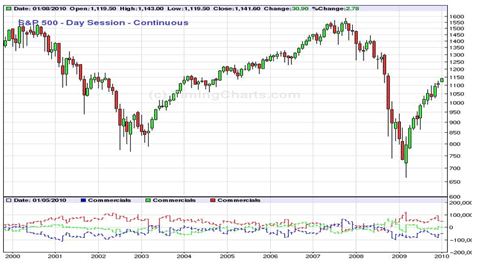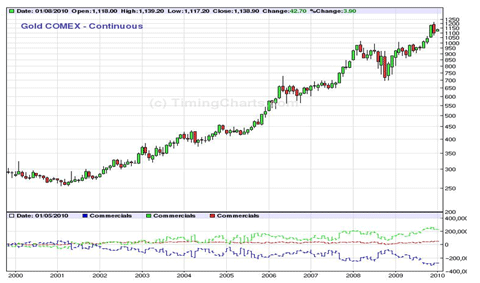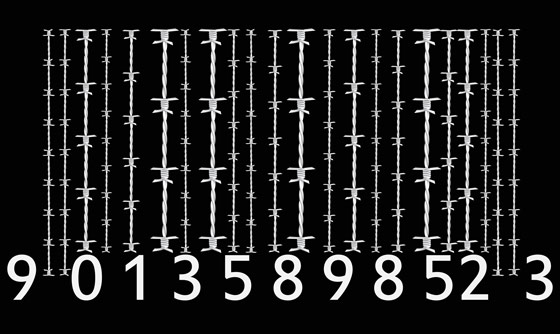My journey into economics began in 1956 when I was a sophomore at Harvard. A classmate was arguing with me that the Federal Government did not have to balance the budget. He was sure of this because his professor had told him so.
My thinking was different. “If the Harvard Department of economics did not believe that we had to balance the budget, then they must be a bunch of idiots. I have nothing to learn from such people. I will learn my economics when I’m out of here Good bye John Harvard.â€
Fourteen years later, in 1970, I knew that the price of gold, then $35, had to go up. After all, pretty much every good in the economic universe had tripled in price between 1935 and 1970. By that time, I had learned about Adam Smith and the law of supply and demand. The decision by the U.S. Government to suppress the price of gold and keep it at $35 (along with its allies in the London Gold Pool) was the height of foolishness. Prices are determined by supply and demand. An important factor in the demand for all goods is the supply of money. And the supply of money had been increasing dramatically over the past 35 years. To anyone who understood the political situation at that time (and knew that the printing of money was going to continue, the conclusion was simple. All prices, most especially the price of gold (which had lagged most other goods), had to go up.
The conclusion was simple, but few others understood it. Henry Reuss, at that time the chairman of the House Banking Committee, announced that the price of gold would fall to something on the order of $6 or $8 per ounce. Actually, gold briefly dipped a few cents below $35 in 1970, and then it was off to the races.
The puzzling thing was that, as gold climbed above $800/oz. (in early 1980), the entire official economic community refused to admit that it had happened. It was one thing to fail to predict the rise in gold in advance. That merely shows one to be an incompetent economist. But these people failed to comprehend (or admit) the rise in gold AFTER IT HAD HAPPENED. This was no longer just a matter of being stupid. It was a matter of being so incredibly stupid that there is no word in the English language (or any other language) to describe it.
Gradually I realized what had happened. Everybody in economics who had some kind of a title was a blithering idiot. None of them had any knowledge at all. Harvard had defrauded me when it told me that its professors were economists, and this same fraud was being perpetrated over the entire world on a much larger scale.
Gradually I was able to piece together what had happened. When FDR took office in 1933, he rammed a bill through Congress (in one day) taking the country off the gold standard and giving the commercial bankers the privilege to create money. They still have that privilege today.
FDR’s claim to be a traitor to his class was a lie. FDR had been a Wall Streeter during the 1920s (running a vulture fund). That is, he was a Gordon Gekko type. He was buddy-buddy with the commercial bankers and relied heavily on them for advice. No, the real traitor to his class was Sam Craig, the “regular guy†New Deal supporter in the 1942 movie, “Woman of the Year.†Sam never thought about politics. He was too busy with the baseball game. He swallowed every lie that the New Deal told. (It is interesting to note that in the period of the American Revolution there was very little interest in sports and great interest in politics. That is part of what is meant by the “spirit of 1776.â€)
FDR did not rob from the rich to give to the poor. FDR (as noted) gave the commercial bankers the privilege to create money and used this to rob from the poor (i.e., Sam Craig) and give to the rich. The banker’s creation of money was controlled by the Federal Reserve (America’s third central bank), a Government agency controlled by the bankers. The bankers secured these positions by bribing (excuse me, donating to the campaigns of) politicians. Notice that during the “crisis†of autumn 2008 both McCain and Obama came up with the same solution. “The bankers ought to print more money.†That money is being printed as we speak (which is why the current theory that there is a danger of “deflation†is nuts).
As the bankers created money, general prices in the U.S. began to rise (and have risen pretty much steadily ever since 1933). The bankers were able to make more loans with this newly created money and profited from the interest on these loans. The bankers’ big loan customers were able to profit from the lower interest rates (which accompanied the creation of money). And Sam Craig found that he could buy fewer goods when he went to the store. But he was confused by the whole thing and did not want to take the time to think about economics or politics. So he voted Democratic anyway. Prior to the New Deal the average American working man increased his real wages by 60% in a 30 year period. (See the wage series in Historical Statistics of the United States, published by the Commerce Dept.) In the next generation that slowed, and starting in 1972 it has been in decline.
 Now exactly where do we stand today? Above is a chart of the S&P 500. A simple glance at it tells you one important truth. For the past decade, stocks have been going down.
Now exactly where do we stand today? Above is a chart of the S&P 500. A simple glance at it tells you one important truth. For the past decade, stocks have been going down.
Is there a word of this in all of the garbage that passes for economics today? Not a breath. I listen to a local radio show which bills itself as the best financial show on radio. It sneers at gold as only a collectable, but it has had its followers in stock funds for the past decade. If this is the best, then it’s a pretty bad lot.
 Here is the chart of gold over the same period. Can you see it? Stocks down. Gold up. S&P 25% lower. Gold 4 times as high. This has been going on for the past 10 years. And 99.9% of the people who have titles in economics and claim to be experts in the field still don’t know it.
Here is the chart of gold over the same period. Can you see it? Stocks down. Gold up. S&P 25% lower. Gold 4 times as high. This has been going on for the past 10 years. And 99.9% of the people who have titles in economics and claim to be experts in the field still don’t know it.
The reason for this is that, once the bankers acquired the privilege to create money out of nothing, they needed intellectual cover. They needed a group of intellectuals who would explain to the public that allowing them to print money was for the benefit of the whole society. They found a couple of sycophants, William Trufant Foster and Waddill Catchings, who argued that paper money was the “road to plenty†for a society. Foster and Catchings were considered crackpots by the economists of the day. Then Keynes entered the scene and put a little twist on the Foster and Catchings theory. He called it progressive and liberal. A collection of hacks and frauds then jumped on the Keynesian ship and are known as the economists of the mid-20 th century.
This is why VIRTUALLY EVERYTHING YOU HAVE BEEN TAUGHT IS A LIE. And all the authority figures to whom you look are charlatans or ignoramuses. Can you imagine a person who entered the field of economics after 1980? .You had the gold bugs, who had been dramatically right. And you had the stock bugs, who had been dramatically wrong. And who did these people choose to learn their economics from? They chose to learn their economics from the people who had been wrong. So they graduate business school believing that we do not have to balance the Federal budget and that printing money does not lower its value. (Actually, this happens in many areas of society. If your marriage is in trouble and you go to a marriage counselor. Then you find that the counselor is divorced. He couldn’t save his own marriage. Again, when Reggie Lewis collapsed on the basketball floor in 1993, the Boston Celtics hired a “dream team†of 12 cardiologists. One of the 12 cardiologists then died of the same disease for which he was treating Lewis. He couldn’t even save his own life.)
Who do you want giving you advice? The divorced marriage counselor, the dead doctor or the establishment economist? Who do you want? The fellow with the title or the fellow who can do the job?
Well, here we are again. We went through this whole thing in the 1970s. The vast majority of the people listened to those with fancy titles. They lost 76% of their wealth in real terms. They gave up an opportunity to multiply their real wealth by a factor of 12 (by putting it into gold). That was the first upswing of the commodity pendulum. Now we are in the second upswing of the commodity pendulum. And it appears that the vast majority are going to make the same mistake again.
Fortunately, we live in a world which is inherently based on justice. Those who see reality as it is are rewarded. Those who deliberately close their eyes to reality are punished. So it was in the ‘70s. So it will be today. History does repeat. It is repeating as we speak. Fantastic moves occur in the financial markets. If you are on the right side of them, you prosper. If wrong, you lose.
This is my job in life, to help the good to prosper and make sure the evil lose. To this end, I publish a small economic letter called the One-handed Economist ($300 per year). You can subscribe by sending $300 to the One-handed Economist, 614 Nashua St. #122, Milford, N.H. 03055. Or you can visit my web site, www.thegoldspeculator.com. You can get a free sample of my writing by visiting my weekly blog at www.thegoldspeculator.blogspot.com This past week I put out a special bulletin saying that the decline in gold (which started on Dec. 3) is now over, and the next move will be up.
Thank you for your interest.
# # #









0 Comments